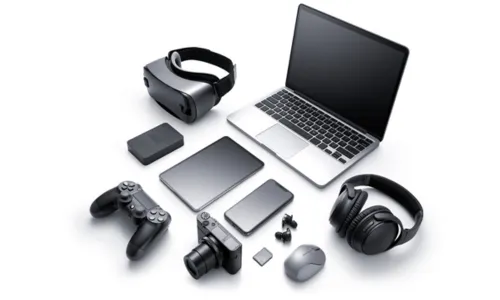Manufacturers in this modern technological world depend on injection molding machines to create large quantities of precise plastic components that combine both high efficiency and minimal material waste. These machines function as a fundamental element in producing reliable, high-quality parts across all product categories, including automotive and packaging, and medical devices, as well as consumer goods sectors.
This blog post will examine the operating principles of these injection molding machines, along with their varieties, as well as important components, while highlighting the advantages and suggesting selection methods for suitable business systems.
What is Injection Molding Machine & How It Works?
The injection molding is a process that operates the manufacturing equipment that produces plastic components through mold-based molten plastic delivery. The manufacturing process produces consistent, high-quality parts at low costs because of its perfect capabilities for making complex parts with strict dimensional requirements.
These machines operate efficiently multiple times when manufacturing plastic components for sectors that include:
- Automotive and transportation
- Consumer electronics
- Medical and healthcare
- Packaging
- Toys and household products
Types of Injection Molding Machines
Three primary divisions exist for injection molding machines depending on their drive systems. Manufacturers choose between various types of machines because each machine matches specific production requirements, which cover both product quality and production volume, and cost efficiency objectives. It includes the following:
Hydraulic Injection Molding Machines
The hydraulic injection molding machines are known as a more durable and stronger system. The key features include:
- Well-established and powerful.
- Ideal for larger parts.
- Lower upfront cost, but higher energy.
Electric Injection Molding Machines
These machines are one of the smarter solutions in the modern world. The key features include:
- These machines are faster and energy-efficient.
- They’re ideal for high-precision parts.
- Best choice for the medical and electronic industries.
Hybrid Injection Molding Machines
These machines have the same power as the hydraulic power that gives:
- Electric efficiency
- Balanced strength
- Energy savings
Know More About Prototype Injection Molding
The prototype injection molding is the best choice for those who want a full-scale production that requires operating small and less complex tools.
Processing of Prototype Molding
First of all, the creation of a mold begins which is made of aluminum or softer steel. Then, the molten plastic injection mold is selected to make the final product. This processing helps in making:
- Significantly fast production
- Affordabilty
- Customized designing options
What Makes an Injection Molding Machine One-of-a-Kind
Whether it’s a whole machine or just the injection mold parts, it’s not only about mass production, but it can help industries for the following reasons:
- Precision and Consistency
- Cost-Efficiency
- Design Flexibility
- Minimal Waste
- Fast Production Cycle
Precision and Consistency
This process helps in maintaining accuracy a complete dimensional knowledge in large-scale production.
Cost Efficiency
The initial setup of these machines may incur high costs, but once they run successfully, the cost per unit drops significantly, and it increases production.
Design Flexibility
This machining process benefits in creating and designing even complex geometric undercuts, with complete detailing and a speedy process.
Minimal Waste
The most important feature of an injection molding machine is its recycling process, which makes it more sustainable and eco-friendly.
Always consider your production goals and part specifications before investing.
Tips for the Perfect Maintenance of the Injection Molding Machine
To make the injection molding machine more durable. Here are a few tips related to this.
- Use proper lubricants for the moving parts regularly.
- Schedule a complete inspection process of electrical and other injection mold parts.
- Keep them regularly clean, especially the molds and barrels.
These proactive tips will increase the usability and functional span of the machine for years and also improve the product quality.
Future of the Injection Molding Machines
As the industries move towards automation and sustainable solutions, one needs to adopt the following things for a better understanding of the prototype injection molding services.
- Smart manufacturing integration
- Sustainable manufacturing
- Use additive hybrid techniques
Smart Manufacturing Integration
The modern-day machines have integrated IoT technologies that can give real-time monitoring, data analytics, and predictive maintenance.
Sustainable Manufacturing
The closed-loop systems explicitly help in the recycling of the materials. This thing helps in reducing environmental damage.
Use of Additive and Hybrid Techniques
The manufacturers are now exploring traditional molding techniques like 3D printing. This flexibility increased the prototyping and smooth production of the whole manufacturing process.
Conclusion
So we can say that an injection molding machine is seen as one of the essential parts of the manufacturing world. The ability to produce precise, concise, and durable designs makes these machines a perfect choice for high-duty industries.
Top industries like automotive, consumer, medical, and aerospace, etc, understand the capacities and mobility of these machines that lead to higher productivity, lower costs, and better end products.
If you find this article helpful, then do share your feedback in the comment box. You can also contact us on our social media channels for the latest technological updates.
FAQs
Q. What is the use of injection molding machines?
Ans: These machines melt plastic and inject it under pressure into a mold to create parts, which are then cooled and ejected.
Q. What are the key parts of an injection molding machine?
Ans: The main parts of the of this machine include the hopper, barrel (with screw and heaters), nozzle, mold, clamping unit, and ejector pins.
Q. What are the main types of injection molding machines?
Ans: There are three main types of injection machines: Hydraulic, Electric, and Hybrid.
Q. What does “tonnage” mean in injection machines?
Ans: Tonnage means the clamping force, indicating the machine’s ability to keep the mold closed against injection pressure.
Q. What are some common problems and fixes of these machines?
Ans: Issues like short shots or flashing often relate to material flow, pressure, temperature, or mold condition. Troubleshooting involves adjusting these parameters and inspecting the mold.








